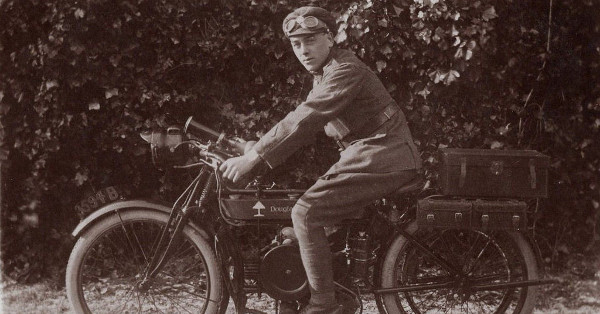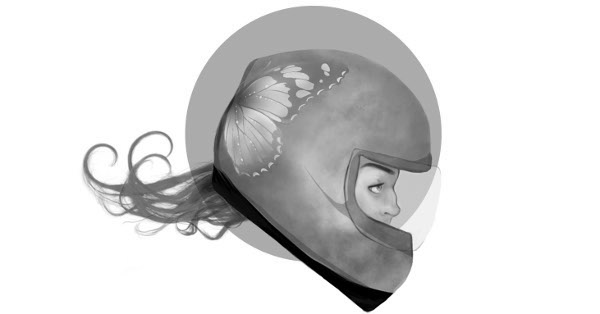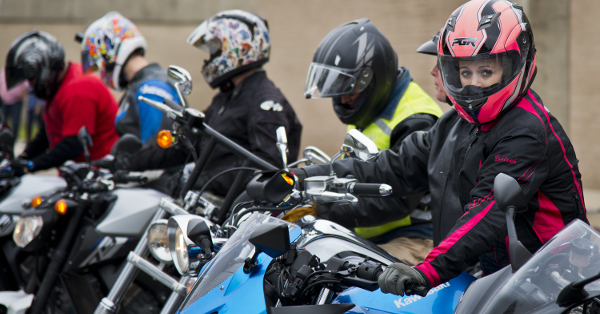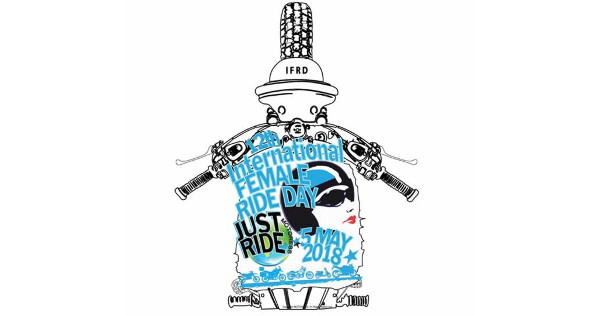Motorcycling: "A man's activity"
Motorcycling and gender stereotypes
Your task: assign a gender to motorcycling. It's male, right?
Motorcycling has historically been seen as masculine. The use of military machines during war, film icons such as Marlon Brando, dispatch riders in the 70s, outlaw motorcycle clubs. Synonymous with leather jackets, cigarettes, rebellion; the bad-boy image. Not at all associated with the traditional view of femininity.
Historically, men have been in the driving seat in more ways than the literal. They were the breadwinners, the protectors, the providers; they were in charge. Masculinity, in its socially-constructed view, is also associated with a sense of machismo - risk-taking, thrill-seeking, a need for speed. It's easy to see why motorcycling has been masculinised.
This has at least been the case in the western world. In many eastern countries, motorcycling is not so gendered. Low-cc motorcycles and scooters have been commonly used by men, women, and entire families, for their fuel economy.
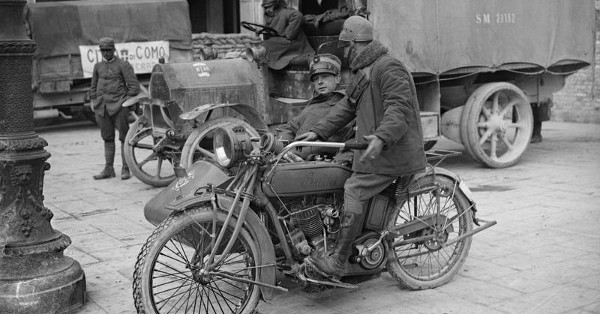
Military motorycles, first world war
This isn't to say there have been no women in motorcycling in the west. There have been famous women riders throughout history. Avis and Effie Hotchkiss, for example - the mother and daughter duo who became the first-known women to ride a bike across the US, back in 1915. The Van Buren sisters, who did the same a year later. The list goes on.
But the number of women motorcyclists has risen in the last 10-20 years. The American Motorcycle Industry reported a 50% increase in the percentage of women riders between 2005 and 2015. Ongoing changes to gender roles and stereotyping are playing their part.
For a while now in the west, yet still more now than ever, women are financially independent of men. Women have more rights than ever before too - more freedoms of expression.
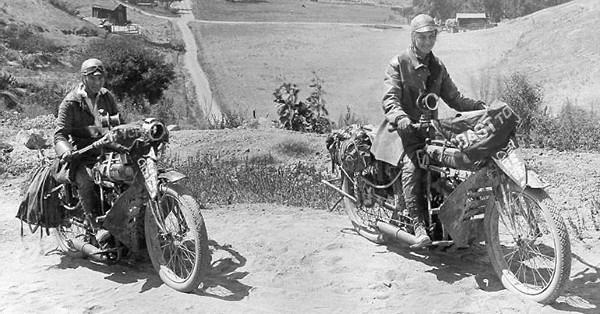
The Van Buren sisters
Motorcycling is a great example of this on a very basic level. Not only in that women are now freer to ride motorcycles, but that the activity itself is attached to a sense of freedom.
Motorcycling may still be seen as risky and dangerous by some. In our current political climate, changing society’s views on gender and incorporating more freedom of choice is the best thing we can achieve.
Nature itself dispels the myth of men being the stronger, more resilient gender. Women's bodies were those nature selected to endure childbirth. Women may not typically be as muscular as men, but a woman's pain tolerance is remarkable. We've all heard of man-flu, but not of its female equivalent.
This is not to weaken men in any way, but to highlight that nature has always believed in gender equality, and nurture is now catching up.
We are all, now more than ever, being who and what we want to be - and it's fantastic!
Masculinity and femininity still exist as constructs, and they are still largely attached to men and women respectively.
If motorcycling is still seen as masculine, let's look at some of the positives of making it more feminine. Masculinity is to be more rebellious and risk-taking. The masculine rider is more likely to be arrogant about their natural abilities to ride. After all, man has long been entitled, whereas females have shown tolerance and adaptability.
If there were results on the per cent of men who asked for directions vs the percentage of women, for example - or the likeliness of a particular gender to read an instruction manual - we might see something striking.
It's a fact that women are statistically more likely to have taken a safety riding course, and are also less likely to get into accidents. Both superb reasons why we should all embrace this change to motorcycling. Why men can no longer argue that they are the more natural suitors to riding.
Not that they would want to - gender roles and stereotyping is diminishing as gender equality is growing. We can all be motorcyclists. We can all be whatever we want to be. This notion is growing with each generation and improving greatly in terms of acceptance. It's not surprising then that the median age of a woman rider is around 39, whereas for men it is 48.
If equality is the goal, then why, you might ask, do we have things such as Female Ride Day? There is a need for encouragement, representation and connections in any minority, in anything which has been historically downtrodden. A need for the celebration of this here freedom. It is not about sectioning off, but about inclusivity and equality in the grander scheme.
Manufacturers are marketing to women riders, to commuters, to adventurers. They are involving many different types of rider. It is not as singular as it once was. Riders come from all walks of life, all levels of education or class. They have different belief systems and varying lifestyles. This is not exclusive to women riders but goes for riders of any gender.
We are more different than ever, and yet, we are all equal; and in this way, more unified by what matters. Male, female, non-binary or otherwise, ask people their main reasons for riding. They will differ, but among them will sit a few ever-present reasons: freedom, being outdoors, self-fulfilment, the sheer joy. We all ride for the same basic reason, and the more of us that do it, the better.
Comments:
27/07/18 - Marjorie Cottle was the well-known trails rider in her time. Even though there’s a lot about her on the web I don’t think she is fully recognised today.
16/07/18 - In or around 1980 as a member of the BMW Club I helped on a stall at the Classic Bike Show in Manchester.
The club had a guest that day, an elderly lady called Marjorie Bottle. To say that she should hold a special place in women's motorcycling would be an understatement. At the time I met her she was living on the Wirral, in Wallasy I think. I was given the honour of guiding her around the show. She was such an interesting person even at about 80 years of age.
Marjorie was a member of the British 6 Days Trial team that went to Austria in 1939. The war was declared before they set off for the UK at the end. They road across southern Germany after the declaration. There were I think 2 women in the team.
I know Marjorie rode for Francis Barnett and possibly Raleigh.
I have never seen a book that told the story of women competing on motorcycles.
